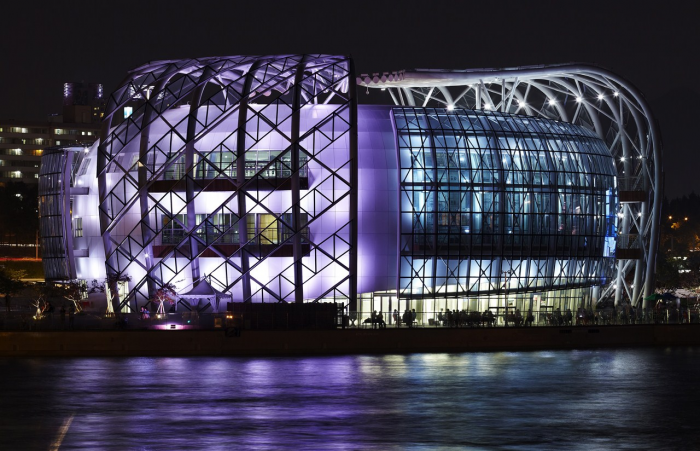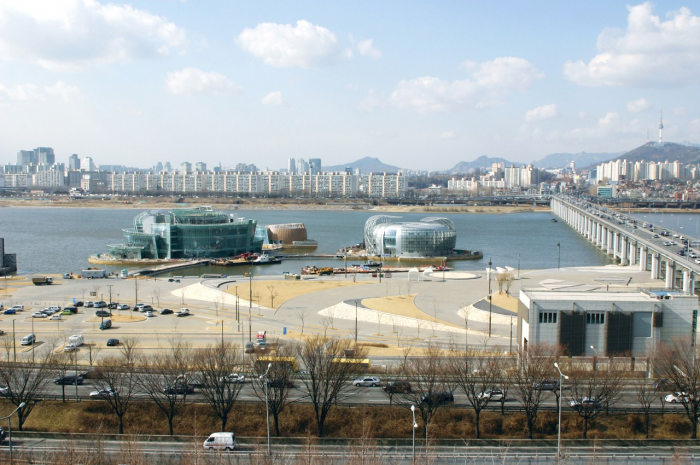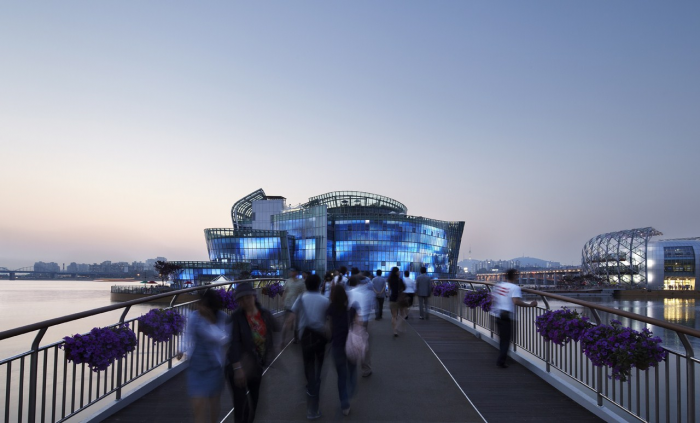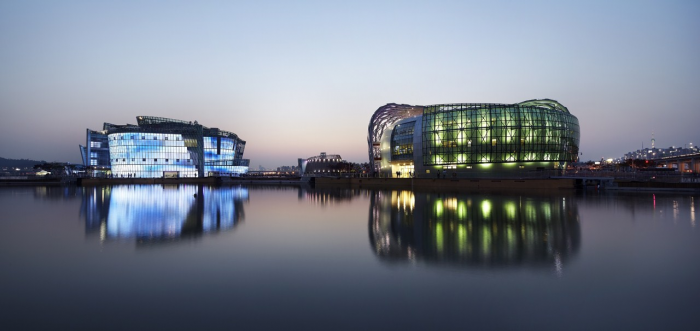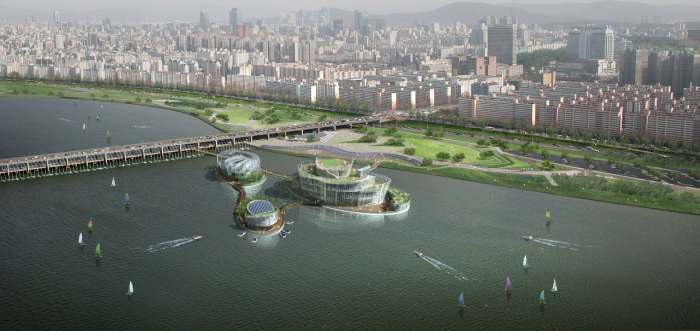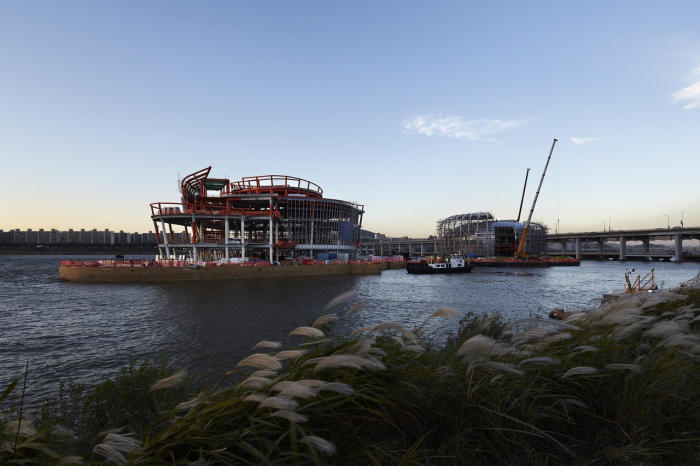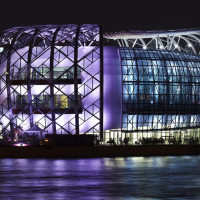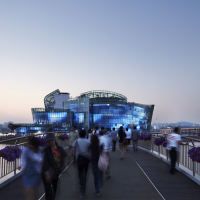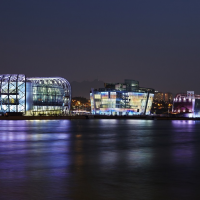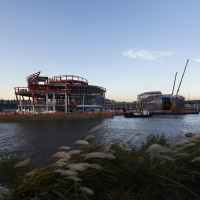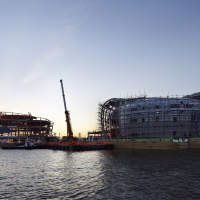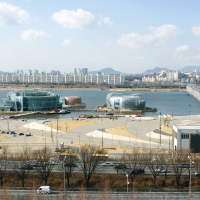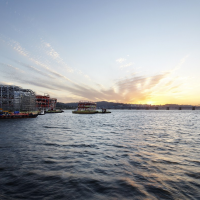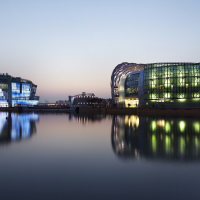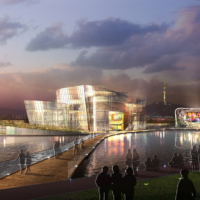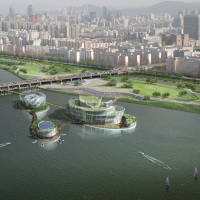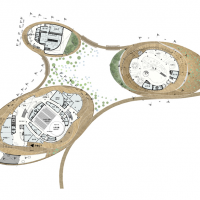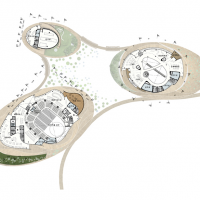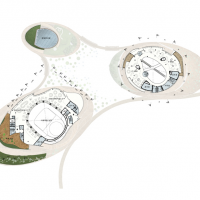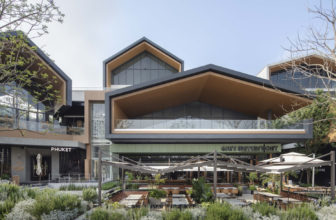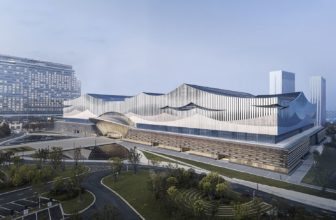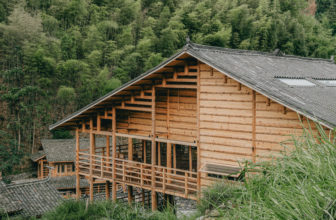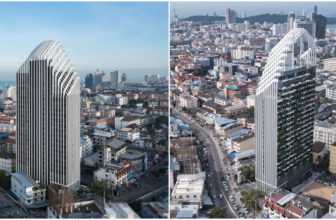Seoul, being one of the most densely populated cities in the world, is undergoing multiple revitalizations of unused urban spaces in order to create places of rest, recreation and culture among an extremely active city. The river has oftentimes been overlooked in many cities, and for Seoul, the Han River divides the city in half and is virtually cut off by fast-paced highways. As part of the Han River Renaissance, initiated by the Seoul Metropolitan Government, the Seoul Floating Islands are part of a large scheme intended to program and stimulate the water landscape.
H Architecture in New York and Haeahn Architecture in Seoul collaborated and won a design competition to create the floating islands that will become a cultural icon of Seoul. Programmatically, the islands contain several cultural, educational, and recreational functions. They will be the venue for many featured events in the city. The design concept stems from the stages of a blooming flower: a seed, bud, and blossom. Each of the islands take on the form of one of these stages, manifesting as delicate yet bold structures of glass, wood, and steel. When completed, the islands were named “Sebit Dungdungseom” which translates to “3 Floating Lantern Islands”.
The smallest of the islands is the “seed”, which is named Island Terra. This island is intended as a base hub for water sports and leisure activities, which are quite popular on the Han River. Island Terra has a roof garden, club house, and water slides that plunge into the river. Also incorporated into this island are the septic and MEP systems needed to ensure that the operation of all three islands have the least impact on the Han River and its surroundings.
The bud of the flowers is Island Viva. This island will serve as an experience performance space for exhibitions and entertainment events. The main program is an urban entertainment center. Island Viva also includes an IT and 3D bar, and an outdoor dance space. This island is characterized by an aluminum metal panel shell that is delicately enclosed with metal framed petals. The diagonal patterning of the external shell emphasizes the dynamic movement of the flower blooming.
The final stage of the flower is the blossom, which is characterized by Island Vista. It is the largest of the three islands and is composed of layers of glass petals. This island will accommodate a 700 person capacity multipurpose hall for plays, concerts, festivals and other cultural performances. Island Vista also has a restaurant, firefly garden, observation deck, and an observation station.
The facades of the floating buildings are expressive of the type of flower each island represents. Island Vista exhibits a fritted glass façade, creating a large undulating palette for an extensive LED lighting system. Island Viva is composed of a curvilinear aluminum paneled building surrounded by transparent faces with translucent ribbon-like panels. All three islands are tied together with the various colors of customizable LED lights and projections. The LED system allows for the programs within to be expressed in many ways on the façade of the buildings, giving the building a dynamic façade that changes per event.
Also important is the float technology used to keep the islands in their proper position while floating on the River. While the buildings must be designed with enough structure for lateral and gravitational loads, they must also be stabilized in the moving river. The islands float via a pontoon system, similar to the floating runways for airplanes, and are held to the river beds by an automated mooring system. In order to maintain stability of the floating islands against the fluctuating water height of the Han River in the monsoon season, the islands incorporate a mooring system which considers several environmental factors such as wind, wave, tides, water depth, and water level fluctuations. Additionally, the angle and shape of the chains are controlled by Dynamic Positioning System technology to ensure stability.
Because the islands are floating, the construction process required prefabricating the structure of the islands on the riverbanks, then launching them in the river using a field of rollers as casters, similar to launching a boat into water. The process of launching the smallest island, Terra, took only a little over 5 hours.
Project Info :
Architects : Haeahn Architecture & H Architecture
Project Location : Seoul, South Korea
Structural Engineer : Opus Pearl
Project Area : 9995.0 sqm
Project Year : 2011
- Courtesy of Haeahn Architecture
- Courtesy of Haeahn Architecture
- Courtesy of Haeahn Architecture
- Courtesy of Haeahn Architecture
- Courtesy of Haeahn Architecture
- Courtesy of Haeahn Architecture
- Courtesy of Haeahn Architecture
- Courtesy of Haeahn Architecture
- Courtesy of Haeahn Architecture
- Courtesy of Haeahn Architecture
- First Floor Plan
- Second Floor Plan
- Third Floor Plan


